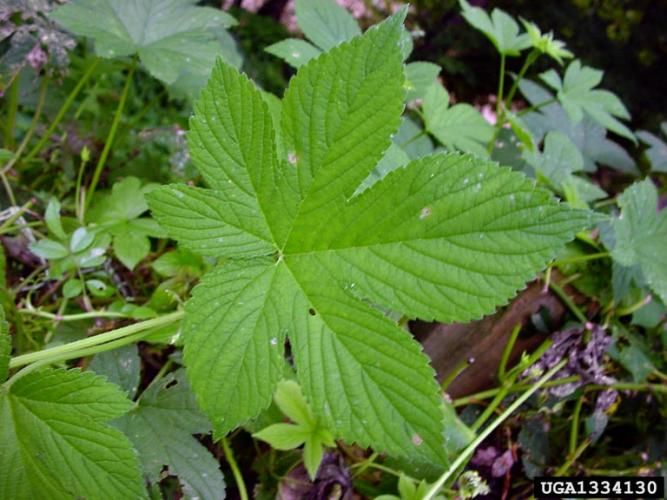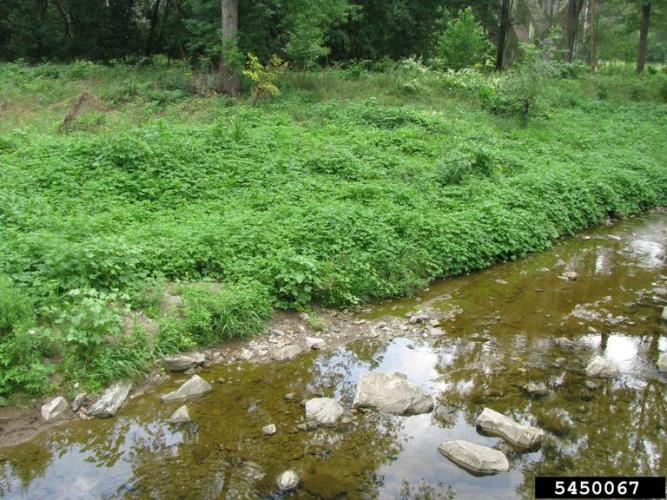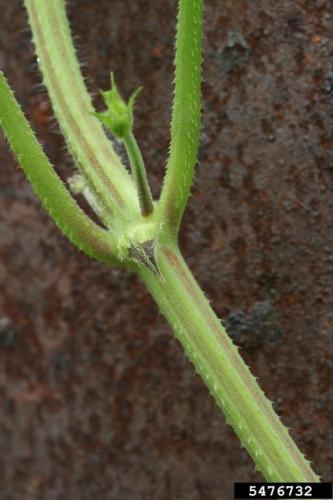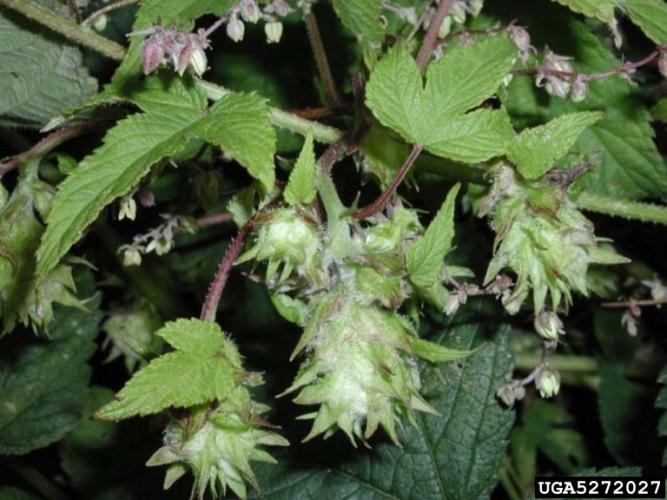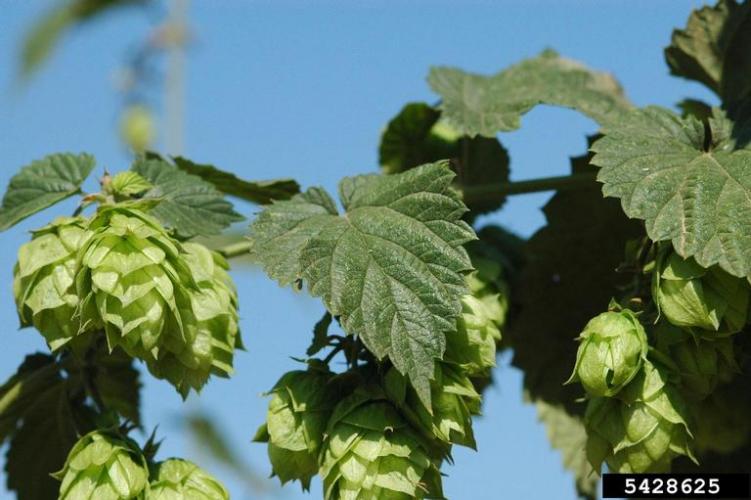Japanese hop
Identification
Appearance
Humulus japonicus is an annual, climbing or trailing vine that is native to eastern Asia. This vine has 5-lobed leaves (generally), downward pointing prickles on the stem and bracts at the base of the petioles.
Foliage
Leaves are opposite, rough, 2-5 inches long, 5-9 lobed with toothed margins. Most leaves will have five lobes, but the upper leaves may only have three.
Flowers
Flowers originate in the leaf axils and are green with five petals. Male and female flowers occur on separate plants (dioecious). Female flowers occur in cone-shaped clusters that hang down and the male flowers occur in upright flower stems.
Fruit
Fruit is a yellow-brown ovoid achene. The small seeds are distributed by wind and water.
Biology
ECOLOGICAL THREAT
Japanese hops can form dense patches that outcompete and smother native vegetation.
ORIGIN
This vine is native to China, Japan, Korea and Taiwan. It was brought to the U.S. in the mid-to-late 1800s as an ornamental and as a medicinal plant. This is not the type of hops used for beer making.
HABITAT
Meadows, fields, disturbed areas
LIFE CYCLE
Japanese hops is an annual, climbing or trailing vine that can grow up to 35 feet in length in one growing season. Female flowers appear in mid summer as cone-shaped clusters that hang down (called hops), while male flowers are upright and stemlike.
Vermont Distribution
Citations
PHOTO CREDIT
Japanese Hop, UGA5272027, Leslie J. Mehrhoff, University of Connecticut, CC 3.0
Japanese hop leaf, 1334130, Chris Evans, University of Illinois, CC Non-com 3.0
Japanese hop infestation 5450067, Leslie J. Mehrhoff, University of Connecticut, CC 3.0
Japanese hop prickles on stem, 5476732, Chris Evans, University of Illinois, CC Non-com 3.0
Common hop, 5428625, Karan A. Rawlins, University of Georgia, CC Non-com 3.0
